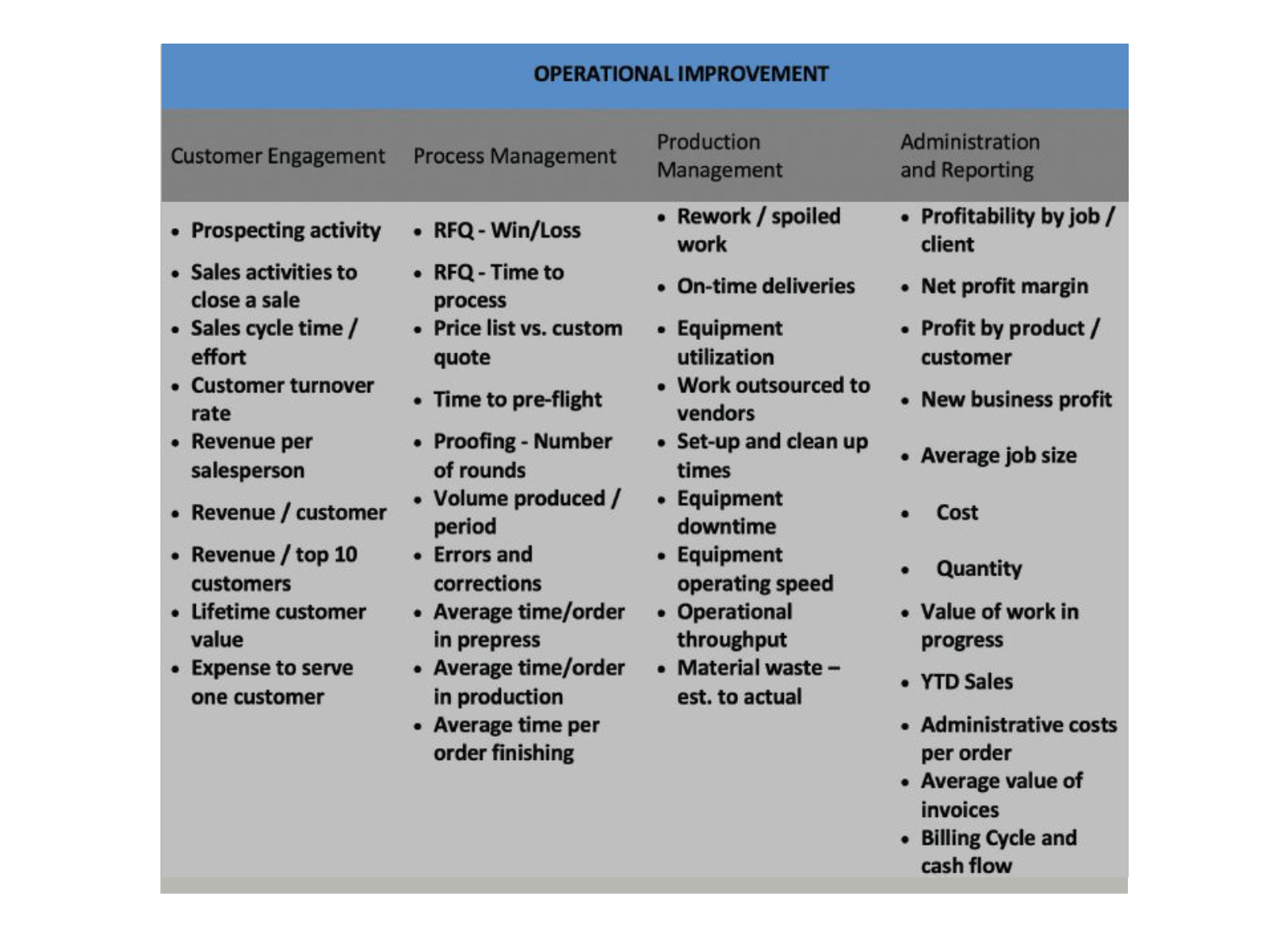Metrics to track for assessing performance
Workflow improvement is a major theme in many industry publications and webinars, and for good reasons. More than 85 per cent of respondents to a recent industry survey indicated that they are dealing with mostly manual processes. If that is the case with you, managing CRM, sales activity, customer inquiries, file preparation and proofing, production and related administrative activity is taking too long and is more expensive than it should be.
The goal is to improve. However, managers need to know what aspects of the business require improvement. Also, how do you check if things have improved? Measurements must therefore be established by the company and constantly monitored.
The adage, “what gets measured gets done” is true. I’m sure many of you have a smart watch or an activity tracker. A Fitbit lets you set hourly, daily and weekly goals, motivates you to keep moving and informs you when you reach the goals! The same applies for managing your business.
The challenge is to know what to measure. Key productivity indicators (KPIs) can help with that. Since there are many types of activities and performances to measure, it is critical to select the correct metrics to avoid ‘analysis paralysis.’ Keep the following guidelines in mind when selecting KPIs:
-
-
- practical – simple, easy-to-get data to report, analyze, maintain and act upon;
- fewer KPIs is likely better so you remain focused;
- identify KPIs that have the greatest impact on your business;
- automate KPI collection and reporting for greatest impact;
- draw from your MIS/ERP system for consistent, relevant data gathering and management;
- in order to get the necessary information from your systems, you need to collect them;
- ensure team understands why you are collecting the data, and how you use it;
- share appropriate data with team members to align everyone’s efforts; and
- interpret what the data means (i.e. what is the root cause of the negative or positive variance and what action needs to be taken).
-
Measure improvement, not just activity. To do this, you need to track KPIs over a period of time (e.g. six months) to understand the changes and identify if they are positive or negative for the company.
For example, sales per month, compared to the same month in a previous year. Also, remember that while revenue is a metric, it can be misleading. For instance, some printers are achieving increased margins with lower sales, so it it good to remember total revenue is only one side of the story.
How to get started
The above image has some suggestions that could help you determine the KPIs that would be useful for you to track. Remember, PrintingUnited publishes performance ratios that can help benchmark your financial and operational performance to industry standards.
By Bob Dale and Howard Conway
As seen in the PrintAction May 2021 issue


